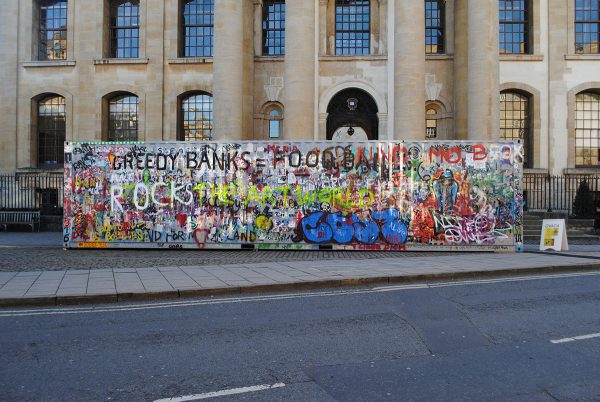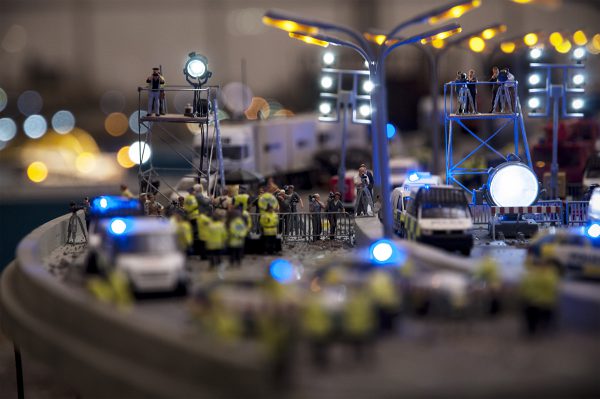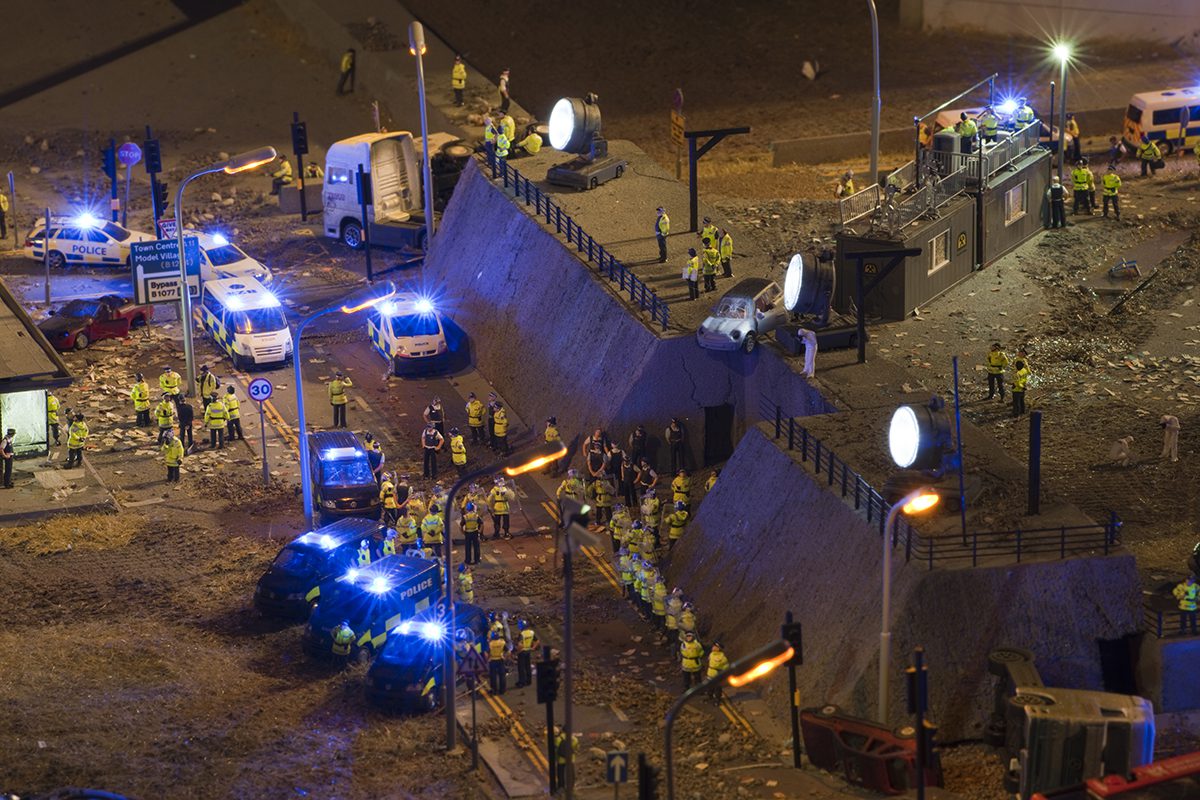A shipping container covered in graffiti sits among the dreaming spires of Oxford, and my partner hears a rather haughty voice remark ‘…Well I don’t think it’s appropriate for the setting of the university, …and not very Christmassy!’, ‘Christmassy’ it might not have been, ‘appropriate’ it was entirely: as the location of Broad Street, Oxford was the setting for the St Scholastica Day riot of 10 February 1355, one of the more notorious events in the history of Oxford – obviously not known to this ‘educated’ individual – was a battle between the university students and the locals, after an altercation instigated by two Oxford students, Walter Spryngeheuse and Roger de Chesterfield in the Swindlestock Tavern – resulting in over 90 deaths. It seems the masses were not happy with the behaviour of the 1% even then.

The shipping container – now concluding its ‘Riot Tour’ – is the latest work from artist Jimmy Cauty, previously known as one-half of The KLF, as co-founder of The Orb – and as part of the K Foundation – when in 1994 the artist burnt a cool one million pounds. ‘Aftermath Dislocation Principle’ (ADP) – the title of this grand display – is housed in the aforementioned 40ft container, and can be viewed through a myriad of peepholes on the container’s surface revealing a miniature, yet monumental post-riot landscape. The scene of a dystopian model village that is set somewhere in Bedfordshire, ‘where only the police and media teams remain in an otherwise deserted, wrecked and dislocated land’. It would seem that the location was fitting indeed.
The origin of the piece lies in a series of works known as ‘A Riot in a Jam Jar’; constructed from tiny individual scenes of social descent, but gone is that mantlepiece-style display, instead we have a ‘totally self-contained off-grid artwork that can go anywhere’ – to the historical locations of riots country-wide in fact. This seems fitting for our time period, where civil disorder and anger seems close to boiling over in our post-Brexit, post-Trump disaster-scape.

Drawing on the iconography of a travelling show, the work has an element of a Victorian spectacular attraction, with the outside of the installation given new graffiti to mark every location in its country-wide tour – in Oxford’s instance American artist Tommy Watkins made his mark, again this seems fitting given the recent post-Trump socio-political dislocation of the United States.
With this pilgrimage to riot sites where significant civil unrest occurred in the history of our country, and a tour at a time of current global upheaval – which will be significant in the development of our own socio-political and cultural landscape – it is tempting to see the work as a romanticism of social disorder, a quiet call-to-arms – even though the press release explicitly denies this idea. But this denial is not helped by the viewer’s glee in viewing the miniature destruction and flashing blue lights, as the tiny figure of a copper wipes ‘fucking…’ graffiti from the crumbling concrete. There seems something voyeuristic and delicious about the surreptitious nature of viewing this work, perhaps a sly call to action that we all hold in our hearts but socially deny, the desire to tear something down and regain control from a ‘nanny-turning-totalitarian’ state.

The juxtaposition of ‘riotousness’ and social order seem explicitly ironic when witnessing the hoard’s attempting to view the work, as the masses huddle to bear witness to the ‘diddy’ carnage. The work itself juxtaposes a post-riot landscape with the history of every location that it has visited, where the desire to ‘tear something down’ gave space to recreate a new social landscape. A somewhat apt juxtaposition among the Oxford University spires. Yet only metres away from Cauty’s potential ‘call-to-arms’ is the site of the burning of three martyrs, the Anglican bishops Hugh Latimer, Nicholas Ridley and Thomas Cranmer, the Archbishop of Canterbury, who were tried for heresy in 1555 and burnt at the stake. It seems no matter the potency of the riot, control is never far away.
Words: Paul Black @Artjourno
Photos: P A Black © 2016
Lead image: Jimmy Cauty, ADP The Aftermath Dislocation Principle, ADP Gallows and Searchlights, credits Thomas Mayer © 2016
Jimmy Cauty – The Aftermath Dislocation Principle – ADP Tour

